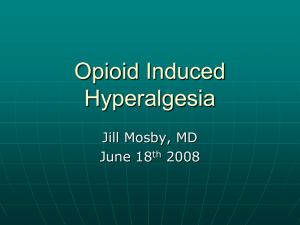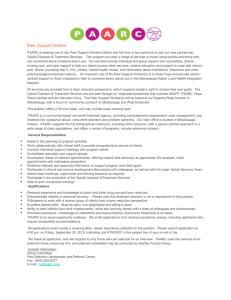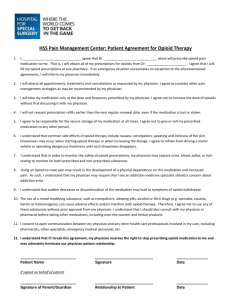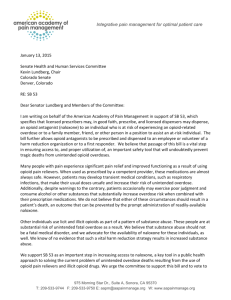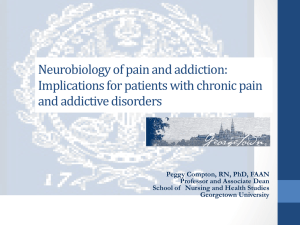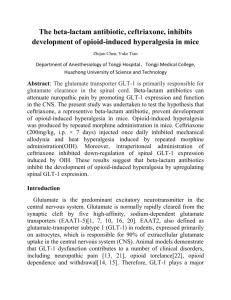Opioid Induced Hyperalgesia Synopsis June 2015
advertisement
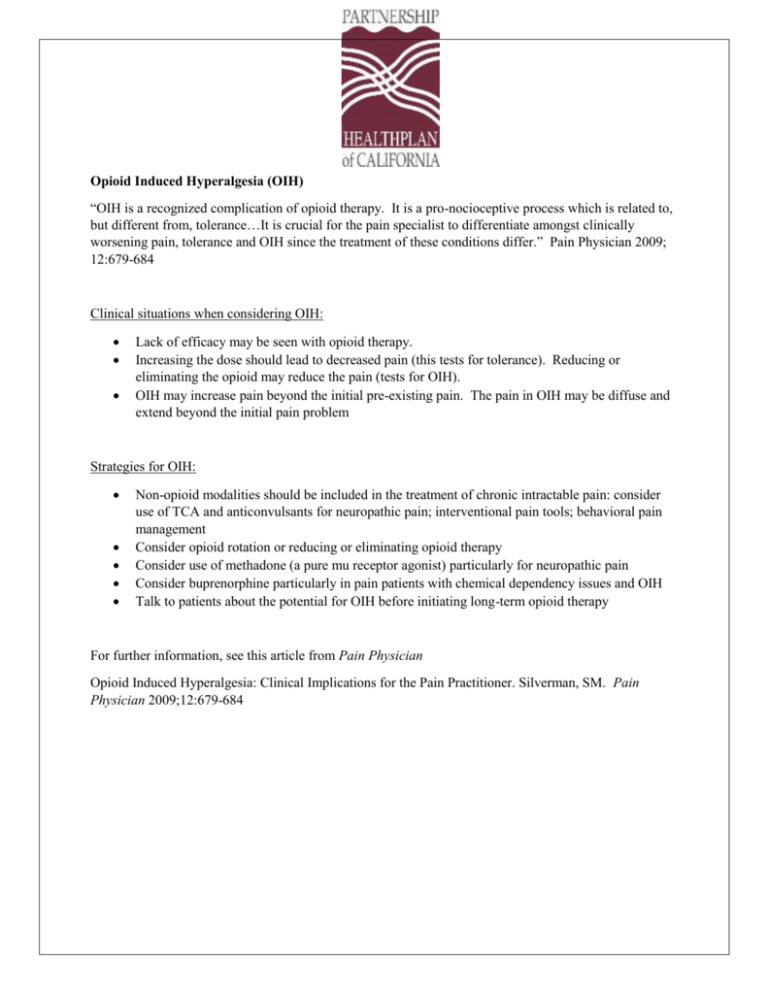
Opioid Induced Hyperalgesia (OIH) “OIH is a recognized complication of opioid therapy. It is a pro-nocioceptive process which is related to, but different from, tolerance…It is crucial for the pain specialist to differentiate amongst clinically worsening pain, tolerance and OIH since the treatment of these conditions differ.” Pain Physician 2009; 12:679-684 Clinical situations when considering OIH: Lack of efficacy may be seen with opioid therapy. Increasing the dose should lead to decreased pain (this tests for tolerance). Reducing or eliminating the opioid may reduce the pain (tests for OIH). OIH may increase pain beyond the initial pre-existing pain. The pain in OIH may be diffuse and extend beyond the initial pain problem Strategies for OIH: Non-opioid modalities should be included in the treatment of chronic intractable pain: consider use of TCA and anticonvulsants for neuropathic pain; interventional pain tools; behavioral pain management Consider opioid rotation or reducing or eliminating opioid therapy Consider use of methadone (a pure mu receptor agonist) particularly for neuropathic pain Consider buprenorphine particularly in pain patients with chemical dependency issues and OIH Talk to patients about the potential for OIH before initiating long-term opioid therapy For further information, see this article from Pain Physician Opioid Induced Hyperalgesia: Clinical Implications for the Pain Practitioner. Silverman, SM. Pain Physician 2009;12:679-684
